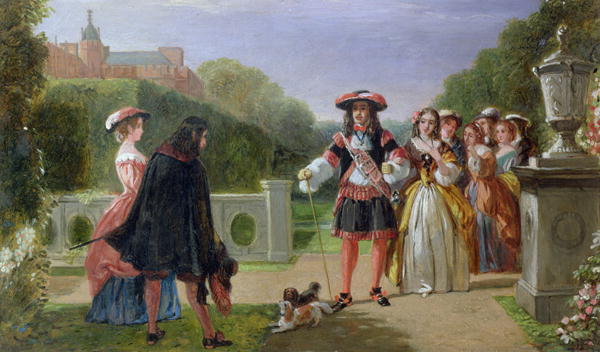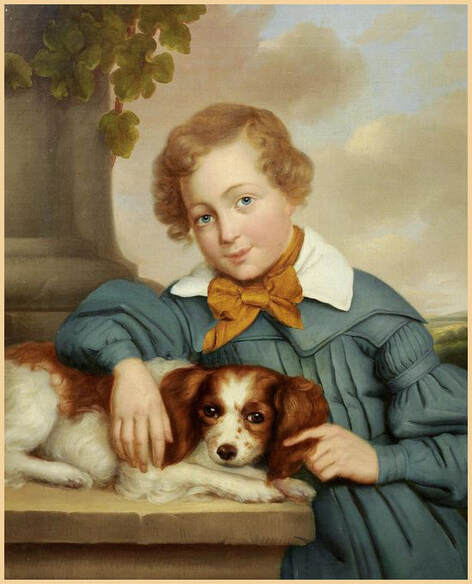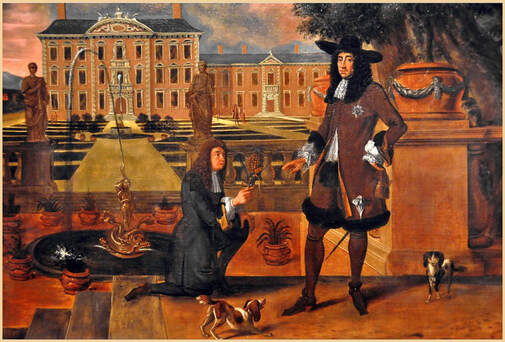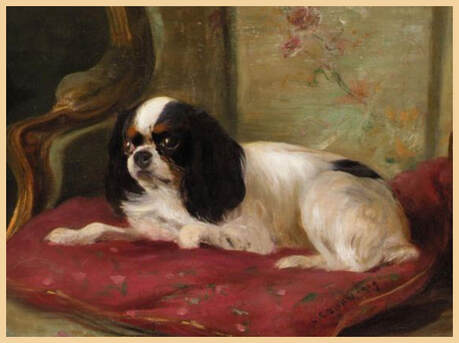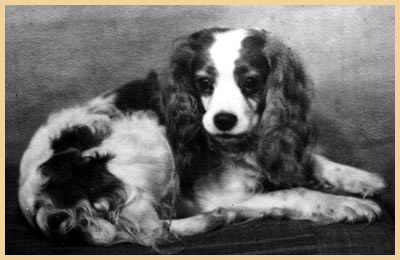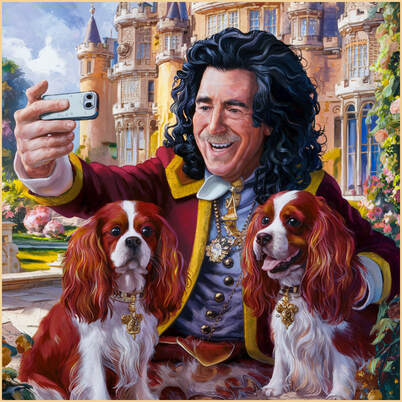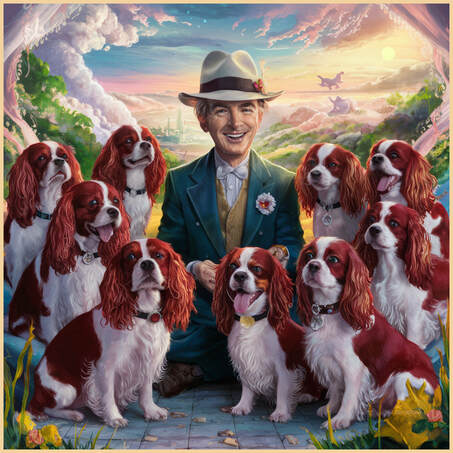The Cavalier King Charles Spaniel, with its regal bearing and endearing charm, holds a special place in the hearts of dog enthusiasts worldwide. However, to truly appreciate the essence of this beloved breed, one must delve into its captivating history, which spans centuries and is interwoven with royalty, devotion, and resilience.
Origins and Early Development
The origins of the Cavalier King Charles Spaniel can be traced back to the early days of European nobility, particularly in England. The breed's lineage can be linked to the toy spaniels that adorned the laps of aristocrats and royalty during the sixteenth century. These small, affectionate dogs were prized for their companionship and loyalty, often depicted in the artworks of renowned painters such as Titian and Van Dyke.
The origins of the Cavalier King Charles Spaniel can be traced back to the early days of European nobility, particularly in England. The breed's lineage can be linked to the toy spaniels that adorned the laps of aristocrats and royalty during the sixteenth century. These small, affectionate dogs were prized for their companionship and loyalty, often depicted in the artworks of renowned painters such as Titian and Van Dyke.
Royal Favor and Patronage
It was during the reign of King Charles II of England in the seventeenth century that the Cavalier King Charles Spaniel truly flourished. King Charles II was an ardent admirer of these spaniels, often seen with several by his side at all times. His fondness for the breed elevated its status to that of a royal companion, earning it the moniker "King Charles Spaniel." The breed's association with the monarchy extended to formal settings, with King Charles II allowing them to accompany him to Court and even Parliament, where dogs were typically prohibited.
It was during the reign of King Charles II of England in the seventeenth century that the Cavalier King Charles Spaniel truly flourished. King Charles II was an ardent admirer of these spaniels, often seen with several by his side at all times. His fondness for the breed elevated its status to that of a royal companion, earning it the moniker "King Charles Spaniel." The breed's association with the monarchy extended to formal settings, with King Charles II allowing them to accompany him to Court and even Parliament, where dogs were typically prohibited.
Evolution and Transformation
As dynasties changed and canine preferences evolved, the Cavalier King Charles Spaniel underwent significant transformations. The influence of foreign courts, particularly the Dutch Court, introduced new breeds such as Pugs and Oriental dogs, leading to interbreeding that altered the traditional Spaniel's appearance. This period of evolution gave rise to the "Charlie" or English Toy Spaniel, characterized by a rounded skull, flattened face, and distinctive features that deviated from its earlier form.
As dynasties changed and canine preferences evolved, the Cavalier King Charles Spaniel underwent significant transformations. The influence of foreign courts, particularly the Dutch Court, introduced new breeds such as Pugs and Oriental dogs, leading to interbreeding that altered the traditional Spaniel's appearance. This period of evolution gave rise to the "Charlie" or English Toy Spaniel, characterized by a rounded skull, flattened face, and distinctive features that deviated from its earlier form.
Preservation Efforts and Revival
Despite these changes, pockets of traditionalism persisted, notably exemplified by the Dukes of Marlborough, who maintained a strain of the original spaniels with their distinctive red and white coats at Blenheim Palace. It was an American enthusiast named Roswell Eldridge who played a pivotal role in preserving and reviving the classic Cavalier King Charles Spaniel. In 1926, Eldridge offered a substantial prize at the Crufts Dog Show for dogs resembling those depicted in paintings from King Charles II's era. This initiative sparked a renewed interest in the breed and paved the way for its resurgence.
Despite these changes, pockets of traditionalism persisted, notably exemplified by the Dukes of Marlborough, who maintained a strain of the original spaniels with their distinctive red and white coats at Blenheim Palace. It was an American enthusiast named Roswell Eldridge who played a pivotal role in preserving and reviving the classic Cavalier King Charles Spaniel. In 1926, Eldridge offered a substantial prize at the Crufts Dog Show for dogs resembling those depicted in paintings from King Charles II's era. This initiative sparked a renewed interest in the breed and paved the way for its resurgence.
Modern Recognition and Popularity
Eldridge's vision materialized in 1928 when Ann's Son, owned by Miss Mostyn Walker, epitomized the breed's ideal traits and claimed the prize, though Eldridge passed away before witnessing the culmination of his efforts. Despite this loss, the breed continued to gain recognition, with The Kennel Club officially acknowledging it in 1945 and the American Kennel Club following suit in 1996. Since then, the Cavalier King Charles Spaniel has captured the hearts of dog lovers worldwide, celebrated for its gentle demeanor, affectionate nature, and undeniable elegance, embodying the enduring legacy of those who championed its preservation and revival from its humble origins in European courts to its esteemed status in the modern canine community.
Eldridge's vision materialized in 1928 when Ann's Son, owned by Miss Mostyn Walker, epitomized the breed's ideal traits and claimed the prize, though Eldridge passed away before witnessing the culmination of his efforts. Despite this loss, the breed continued to gain recognition, with The Kennel Club officially acknowledging it in 1945 and the American Kennel Club following suit in 1996. Since then, the Cavalier King Charles Spaniel has captured the hearts of dog lovers worldwide, celebrated for its gentle demeanor, affectionate nature, and undeniable elegance, embodying the enduring legacy of those who championed its preservation and revival from its humble origins in European courts to its esteemed status in the modern canine community.
Conclusion
The history of the Cavalier King Charles Spaniel stands as a testament to its lasting influence and unwavering allure. Originating as a beloved companion of European nobility, the breed's journey from its modest beginnings to its modern day revival is a testament to its enduring qualities of loyalty, grace, and resilience. As we reflect on its storied past, we eagerly look forward to a future where the Cavalier King Charles Spaniel continues to enchant and captivate dog enthusiasts for generations to come. It's heartening to imagine Mr. Eldridge looking down from above with a smile upon his dream realized, surrounded by his own group of Cavaliers.
The history of the Cavalier King Charles Spaniel stands as a testament to its lasting influence and unwavering allure. Originating as a beloved companion of European nobility, the breed's journey from its modest beginnings to its modern day revival is a testament to its enduring qualities of loyalty, grace, and resilience. As we reflect on its storied past, we eagerly look forward to a future where the Cavalier King Charles Spaniel continues to enchant and captivate dog enthusiasts for generations to come. It's heartening to imagine Mr. Eldridge looking down from above with a smile upon his dream realized, surrounded by his own group of Cavaliers.
